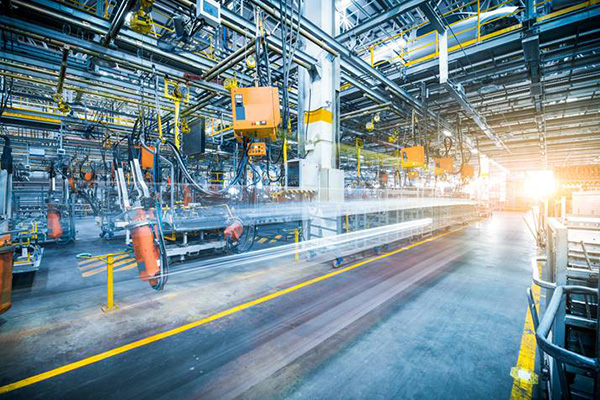Why your CFO is demanding next generation analytics.
By: Richard Lebovitz, president and CEO, LeanDNA
At no other time in my career have I seen business leaders in the C-suite—particularly the CFO—be more acutely interested in factory and supply chain analytics. As we all know, there have been bumps in the manufacturing road before, but nothing as profound and life affecting as what has transpired during the COVID-19 pandemic. As of January 2021, more than 2.5 million people had lost their lives, and the global economic impact is estimated at 2 trillion dollars and growing.
The effects have been painfully evident to manufacturers of all shapes and sizes. Meeting growing customer demand has been a challenge for some, while other manufacturers are struggling to reduce excess inventory due to demand falling off a proverbial cliff. A staggering 89% of global manufacturers said that their business has been impacted during the pandemic. Consider the aerospace industry as an example: As countries and organizations imposed a lockdown on travel, airline revenues were devastated, resulting in countless aerospace component suppliers (e.g. passenger seats, body panels, electrical equipment, etc.) required to right-size their inventory almost overnight. At the same time, all manufacturers were dealing with unprecedented workforce challenges, trying to decide how to safely staff during the pandemic or whether they must lay off staff because demand dried up.
These seismic effects on employees, shareholders, and the bottom line triggered the C-suite interest in uncovering opportunities for savings.
Enter: Your CFO’s interest in AI-driven, prescriptive (read: actionable) analytics for factory management.
Not only do actionable analytics ease stressed workforces (which can be tied to monetary savings by way of training and turnover costs), a focus on this area of the supply chain holds extra working capital you might be missing today. Until recently, a “modern factory” conjured images of physical robots and lights-out production lines, but those images leave out a critical capability: The ability to optimize inventory levels, prevent late penalties, and free up excess capital tied up in static inventory.
The quickest and most effective way to realize these savings is through the deployment of actionable analytics that are purpose-built for factory management, and here’s why:
When uncertainty looms (as it always does), balancing proactive planning with real-time response is key. To date, factory modernization (read: automation) has remained on the factory floor, much to the chagrin of supply chain leaders. Front-line supply chain professionals are still bombarded with conflicting exception messages from their ERP (or multiple ERPs), or shackled to spreadsheets full of static data collected from myriad systems, often across multiple factory locations. The C-suite is realizing how dramatically this limits visibility up, down, and across the operation. Modern analytics supply visibility and access to key information:
Spreadsheets and reactive exception reports have been the industry standard for over 20 years, but fortunately the industry has now recognized its latent need for a better way.
The $$$ opportunity: Best-in-class, modern factories are adopting automated factory management platforms that work alongside existing ERPs, MRPs, demand planning and SIOP systems, supplier portals, MES, and WMS infrastructure. The beauty? Purpose-built advanced analytics platforms for factories can be quickly deployed at a fraction of the cost of the larger systems manufacturers have already invested in. This specialized area of the supply chain will create more value from these existing investments with a usefulness and actionability to uncover continuous savings. Instead of expensive investments in ERP systems remaining underutilized, the information is made available for all to see and use—part of the reason your CFOs are so interested in this area of the business right now.

The true, unrealized power of actionable analytics goes beyond simple business intelligence (BI) reporting and aggregation of data: In addition to normalizing manufacturing industry best practices, actionable analytics literally tell factory management professionals what to do to optimize inventory for a particular business need. It eliminates their typical workflow of shuffling through hundreds of ERP exception report emails, diving deep into legacy spreadsheets, emailing back and forth between teams, sites, and business units. Once everyone can see the same version of what’s happening, they can dive into why it’s happening and what they should do to fix it: “Just data” becomes value-adding actions instantly.
The $$$ opportunity: First, workers aren’t wasting their time paralyzed by information. Actionable analytics not only prioritize what to do, but explain why to do it, delivering root cause information. The investment in the workforce goes further when workers are empowered every day with valuable actions to take, such as which POs to push out or split to prevent excess inventory from growing, or finding alternate sources of supply to mitigate a future critical shortage. The best laid plans are no longer reliable. Prescriptive and predictive actions like these are the key to supply chain agility in today’s complex market—and the savings opportunity there is infinite.
Another complementary and crucial savings opportunity of prescriptive analytics and purpose-built workflow for the factory is the effect on the people. I’ve been there: Buyers, planners, and supply chain managers are doing a thankless job, working nights and weekends to switch gears and react to inevitable disruptions. Even when things are “normal,” the work of a buyer, for example, can be extremely tedious and predictably unpredictable, with myriad manual and repetitive efforts. The next generation of factory leaders—millennials and Gen Z now the primary source of new talent—grew up expecting elegant, often-automated solutions to repetitive tasks. They are frequently less interested in the traditional factory management job sans technology.
The $$$ opportunity: If you give the new generation of factory managers the right tools for today’s complex, global, customized and customer-focused manufacturing job, you’ll attract and retain the necessary talent. It’s simple: It’s more affordable to retain and grow existing talent than to constantly re-hire, re-train, and re-invest in new people.
Sticking to the status quo—the same old spreadsheets-to-email-to-spreadsheet process—is more costly than any other move an enterprise can make today. CFOs are now focusing on this area of the business—factory and inventory optimization and the analytics upgrades that can be made—because the cost of doing nothing is steadily climbing. Without improvements, teams are making costly inventory mistakes, reacting too slow to customer demands, losing precious talent, and losing their competitive edge.
In 2021 and beyond, springing from the pandemic challenges, leaders of agile, resilient and modern manufacturing companies will have end-to-end inventory and shortage visibility, standardized data and analysis across the organization, root causes and data inaccuracies surfaced automatically—and by extension, a happier workforce and a healthier bottom line.

About the Author
Richard Lebovitz is the founder and CEO of LeanDNA, the only purpose-built analytics platform for factory inventory management. Built by lean experts, LeanDNA empowers supply chain professionals to dramatically reduce excess inventory, deliver on time, and establish operational command.
In this episode, I sat down with Beejan Giga, Director | Partner and Caleb Emerson, Senior Results Manager at Carpedia International. We discussed the insights behind their recent Industry Today article, “Thinking Three Moves Ahead” and together we explored how manufacturers can plan more strategically, align with their suppliers, and build the operational discipline needed to support intentional, sustainable growth. It was a conversation packed with practical perspectives on navigating a fast-changing industry landscape.